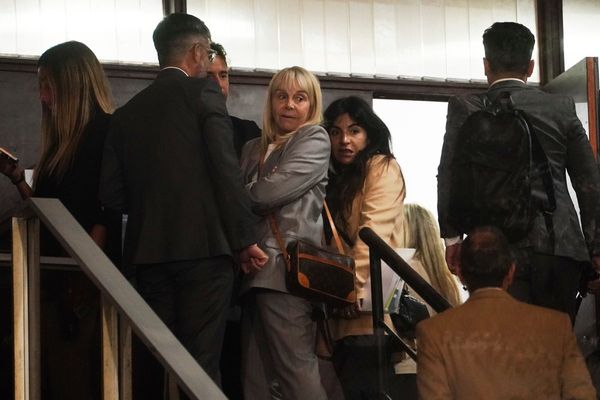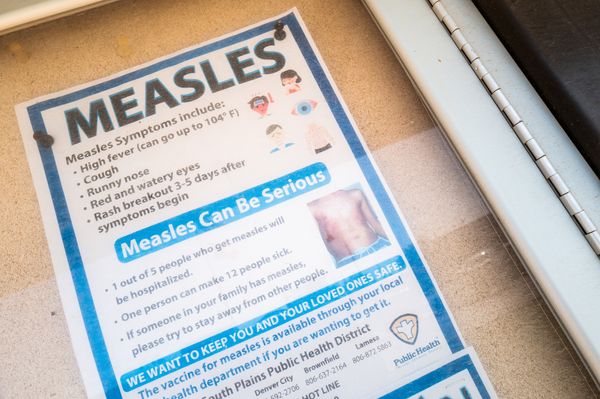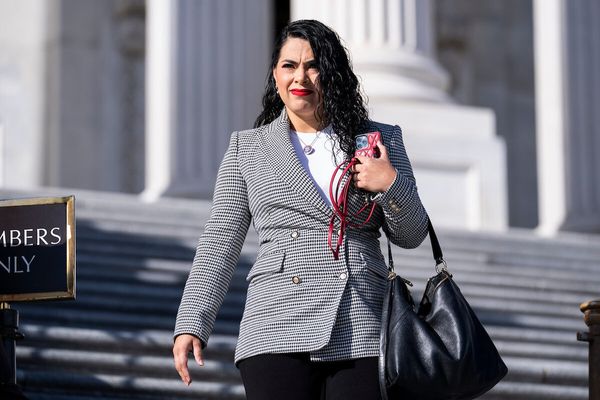
Israel and Hamas have carried out a prisoner swap, the latest exchange under the deal to secure a ceasefire in the war in Gaza.
Hamas released three Israeli captives on Saturday morning, while Israel’s prison service confirmed it released 183 Palestinians, saying in a statement that they “were transferred from several prisons across the country” before being taken to the occupied West Bank, occupied East Jerusalem and Gaza.
The exchange is the fifth under the truce agreement, which took effect on January 19 but already appears increasingly fragile amid United States President Donald Trump’s proposal to forcibly displace Palestinians from the besieged enclave.
Carefully managed release
Hamas handed the Israeli captives over to the International Committee of the Red Cross at a carefully managed event on Saturday morning.
The three male civilians – Eli Sharabi, 52, Or Levy, 34, and Ohad Ben Ami, 56 – were released under the first phase of the truce, which runs until early March.
Ahead of the handover, they appeared on a stage set up in Deir el-Balah in central Gaza, surrounded by Qassam Brigades fighters and holding up release certificates.
Banners on the stage read: “We are the flood, we are the war’s next day.”
Al Jazeera’s Tareq Abu Azzoum reported that crowds chanted their support for the Qassam Brigades, Hamas’s military wing.
A bus carrying Palestinian prisoners released from Israeli jails under the Gaza ceasefire deal has arrived in Ramallah in the occupied West Bank, where they were greeted by a jubilant crowd and Palestinian security personnel. pic.twitter.com/fPgp1Uv3Ym
— Al Jazeera English (@AJEnglish) February 8, 2025
Shortly after the release of the Israelis, television footage showed a bus leaving the Ofer Prison in the occupied West Bank. Dozens of released Palestinians disembarked shortly afterwards in the town of Ramallah to scenes of jubilation from the waiting crowd.
Seven Palestinians among those released were admitted to hospitals upon arriving in Ramallah, the Palestinian Prisoner’s Society said.
Seven will be transferred to Egypt ahead of further deportation.
Among the Palestinians set for release were senior Hamas figures. Iyad Abu Shakhdam, 49, was jailed for nearly 21 years over his involvement in Hamas attacks on Israel in the Palestinian uprising of the early 2000s.
Jamal al-Tawil, a prominent Hamas politician in the occupied West Bank and former mayor of the village of el-Bireh, near Ramallah, spent nearly two decades in and out of Israeli detention, most recently without charge.
Frail and gaunt
Pictured as they were released, the trio of Israelis appeared gaunt and frail following their 16-month ordeal.
“The disturbing images from the release of Ohad, Eli, and Or serve as yet another stark and painful evidence that leaves no room for doubt – there is no time to waste for the hostages! We must get them all out, down to the very last hostage. Now!” said the Hostages and Missing Families Forum in a statement.
The three were swiftly handed to Israeli military and intelligence officers, according to a statement by the army, to be “escorted” to Israel by elite units.
Hamas has released three Israeli captives and handed them over to the International Committee of the Red Cross in central Gaza's Deir el-Balah. pic.twitter.com/WrOZSTHO5f
— Al Jazeera English (@AJEnglish) February 8, 2025
Sharabi and Ben Ami were taken from Kibbutz Be’eri, a farming community targeted by Hamas during its attack on southern Israel on October 7, 2023, in which about 1,200 people were killed and 250 taken captive. Levy was abducted from the Nova music festival.
Al Jazeera’s Hamdah Salhut said the first captive released, speaking on stage in Hebrew amid the armed Hamas fighters, called on the Israeli government to follow through with phases two and three of the deal. “The majority of the Israeli public wants this too,” she said.
On Tel Aviv’s Hostage Square, Israelis waited “with bated breath”, she said. “This has become a symbolic place for family members of captives … and for the greater Israeli public, who have been campaigning for their release and trying to put pressure on [Prime Minister] Benjamin Netanyahu … to adhere to this deal.”
West Bank raids
Overnight, the Israeli military is reported to have carried out raids across the West Bank on the family homes of some of the Palestinians set for release.
The Palestinian Information Center said houses in the village of Deir Nidham, northwest of Ramallah were among the targets while “dozens” of people in the city of Qalqilya were arrested.
⬅️مشهد من اعتقال قوات الاحتلال عشرات الشبان خلال اقتحام بلدة عزون شرق قلقيلية مساء الأمس pic.twitter.com/sOJRz7wJDO
— المركز الفلسطيني للإعلام (@PalinfoAr) February 7, 2025
Second phase unclear
The first 42-day phase of the ceasefire agreement, which calls for 33 Israeli captives and nearly 2,000 Palestinian prisoners to be released, has so far held despite uproar over Trump’s proposal to clear Gaza of its inhabitants and take over the territory.
So far, 18 Israeli captives and 550 Palestinian prisoners have been exchanged. But it is feared that Trump’s plan could complicate talks over the second and more difficult phase, when Hamas is to release the remaining captives in return for a lasting ceasefire.
The armed group is thought to have little motivation to give up the leverage that the captives represent should there be a prospect that the US and Israel would then embark on an ethnic cleansing of the enclave.
A third phase of the agreement calls for the reconstruction of Gaza, but US officials have also recently raised significant doubts over that.
The first phase of the ceasefire also includes the return of Palestinians to northern Gaza and an increase in humanitarian aid to the territory. Last week, wounded Palestinians were allowed to leave Gaza for Egypt for the first time since May.
It is unclear whether Israel and Hamas have begun negotiating the second phase, and it is feared that the devastating war, which has killed more than 61,709 people in Gaza, a figure which now includes at least 14,222 missing and presumed dead, could resume in early March.
More than 100 of the captives that Hamas took were released during a weeklong ceasefire in November 2023. More than 70 are still in Gaza, however, at least a third are believed to be dead.







